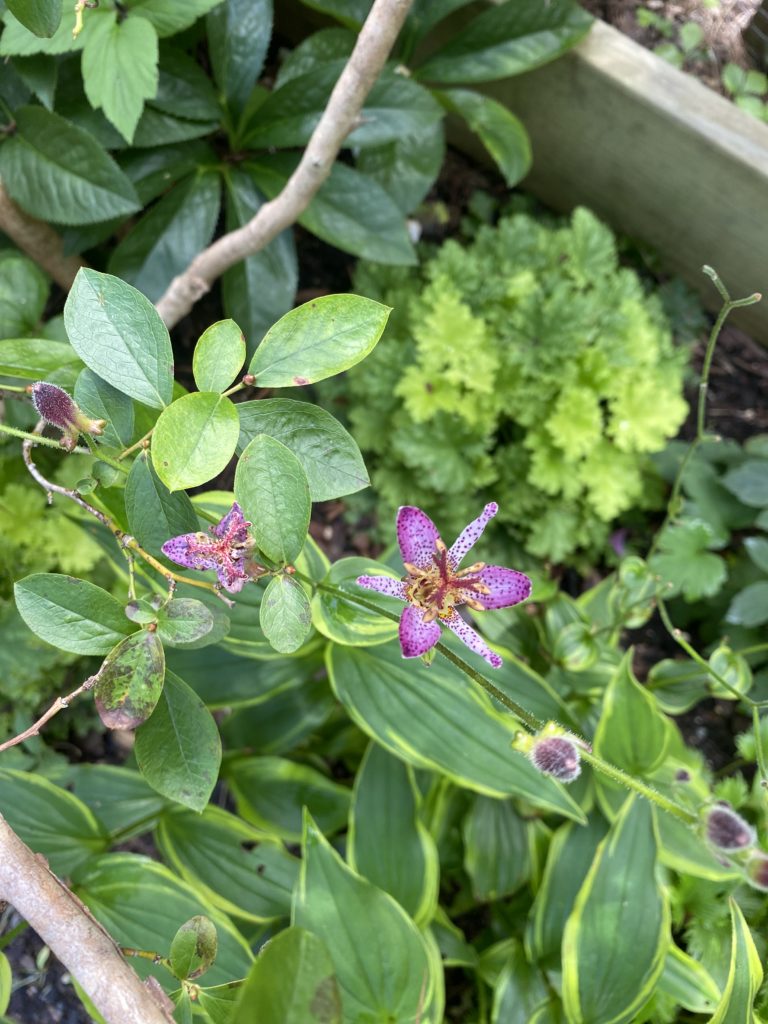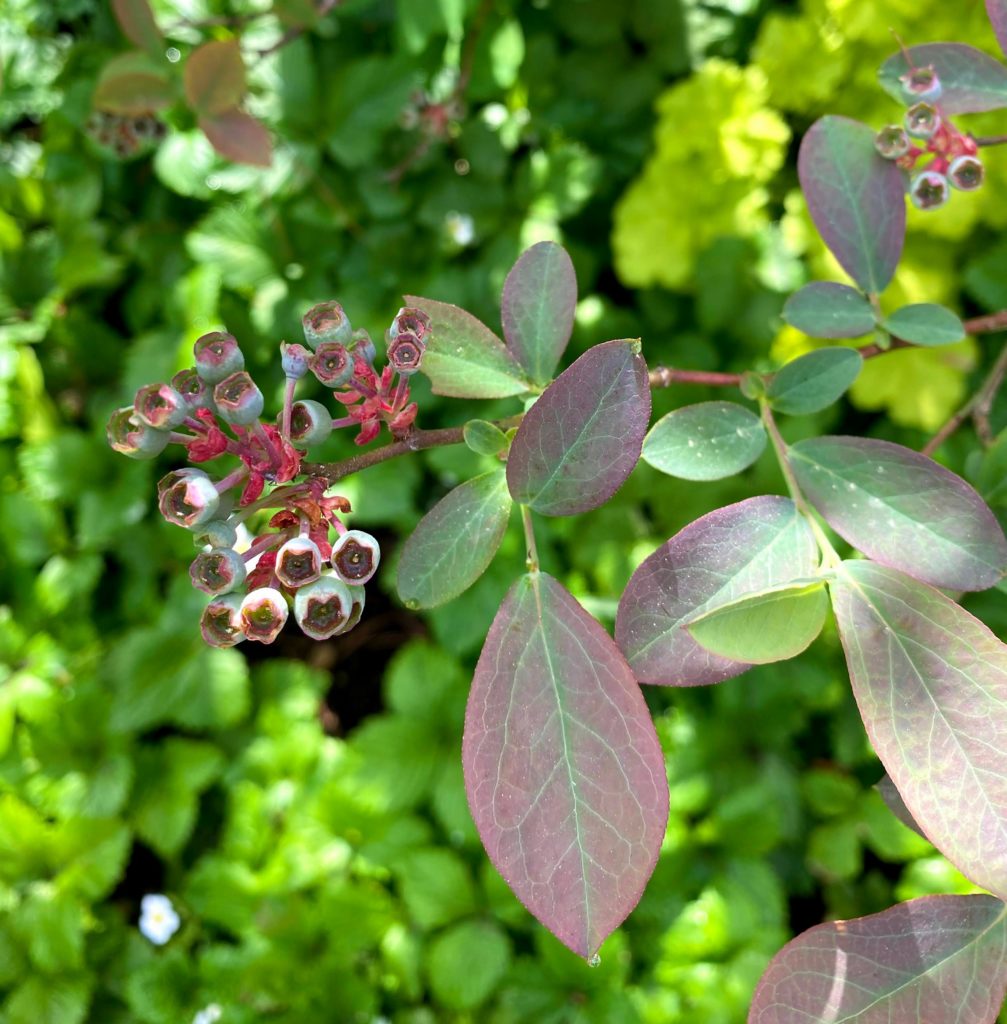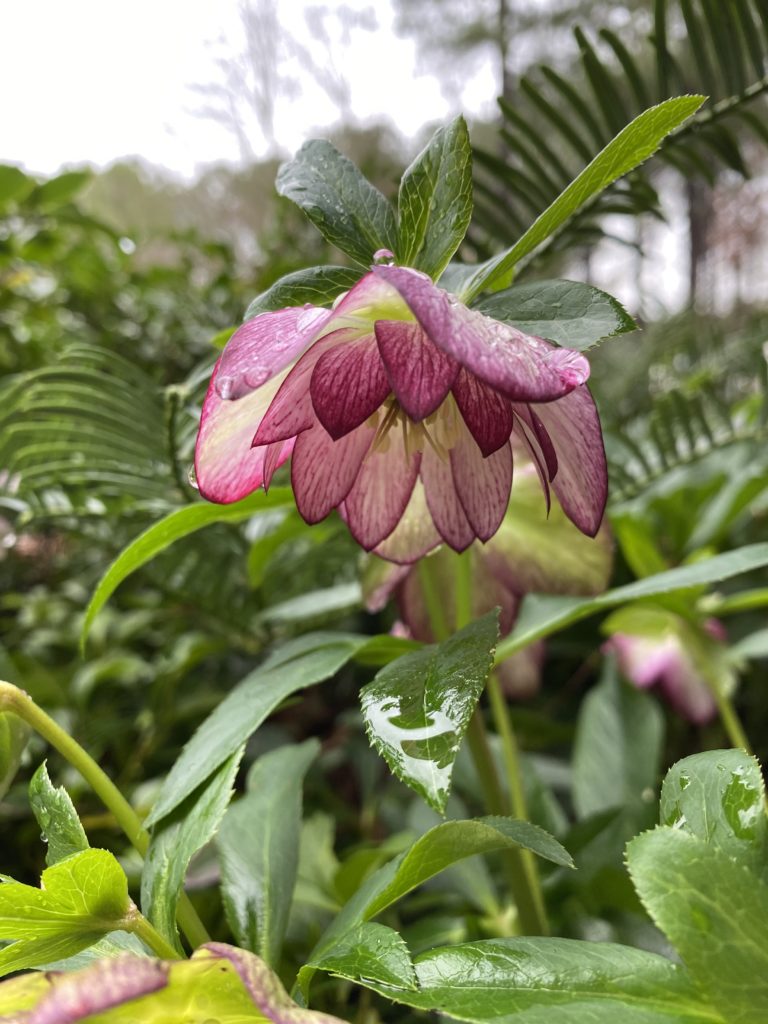
Once the leaves have fallen, which often doesn’t happen until November here in Georgia, I am both relieved ( there is no more work to be done) and hopeful as I look forward to what the next growing season might bring. I’m not cutting back much of anything until late winter as I’ve been reminded by various people that the withered stems and foliage of garden plants provide cover and nutrition for birds, insects, and other small creatures in my organic garden. So this month I have more time to just sit, look, and think.
So what’s on my mind this winter? I’m thinking about companion plants. My young garden has been furnished with all of the things that give it structure (shrubs, trees, seating, and hardscape) and now I need to focus on all of the little details that will make it uniquely my own. Think of your garden as a room in your home. Bulbs, annuals, perennials, vines, and groundcovers are the accessories that give the garden room personality, whether you like things to be quirky, colorful, or sophisticated.
In several areas of my garden I have already layered in my favorite bulbs, groundcovers, and perennials with existing woody ornamentals. Other areas, especially those at the edge of woodland, are unfinished as I try to balance the need for deer-proofing my space with my craving for unusual and interesting plants.
Don’t Settle for Pretty Good
I don’t choose a plant for my garden simply because it will solve a design problem (or a deer problem). That would be like going to one of those big home stores and filling my cart with trendy accessories to create instant décor. While I see nothing wrong with that, I’m not that girl. I need time to accumulate things that I truly love, and I feel the same way about garden purchases. Liriope might work just fine as a companion plant in my garden, but growing liriope doesn’t make me happy, so I will never use it.
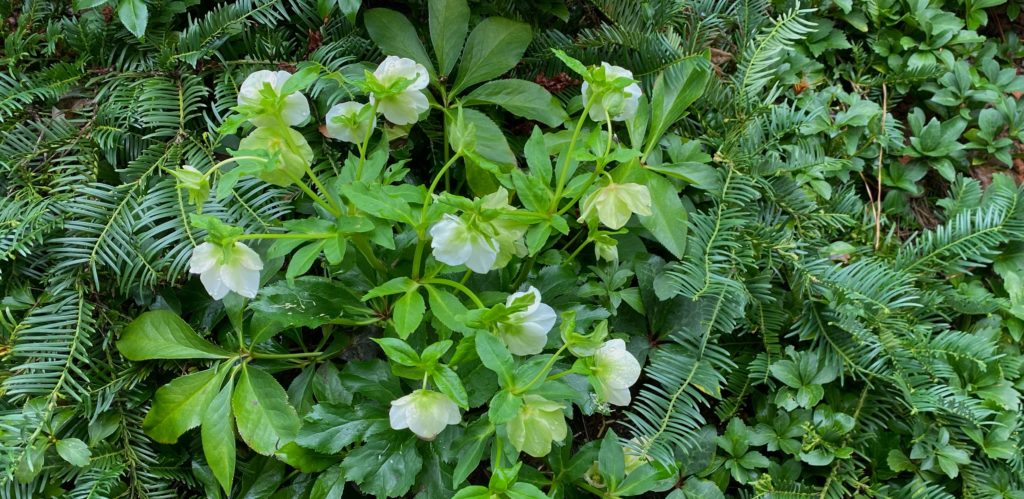
Deciding on plant partners is a slow, sometimes frustrating process, but in the long run it saves me money because I don’t spend money on things that are just acceptable. I want plants that make me smile when I see them paired with something already in my garden. It can be as simple as the pool of snowdrops I planted at the base of a rhododendron at the edge of the woods. Or it might be something a bit more sophisticated – maybe a spring-flowering viburnum, a clematis to scramble through that same shrub in summer, and underneath it all, a showy groundcover and fragrant spring bulbs. (If you happen to have a small garden space, this is how you make the most of every inch.)
Choosing the Right Plant
On my garden journey, pieces of the design puzzle fall into place over time as I shop through the seasons. More and more often these days I look for unusual plants sold by specialty growers on the web. There are some wonderful niche growers out there, and with a little research you can find one that carries plants well-suited to your soil type and planting zone. I tend to order from growers in the Southeast because the plants they offer will likely do well in my zone 8 garden.
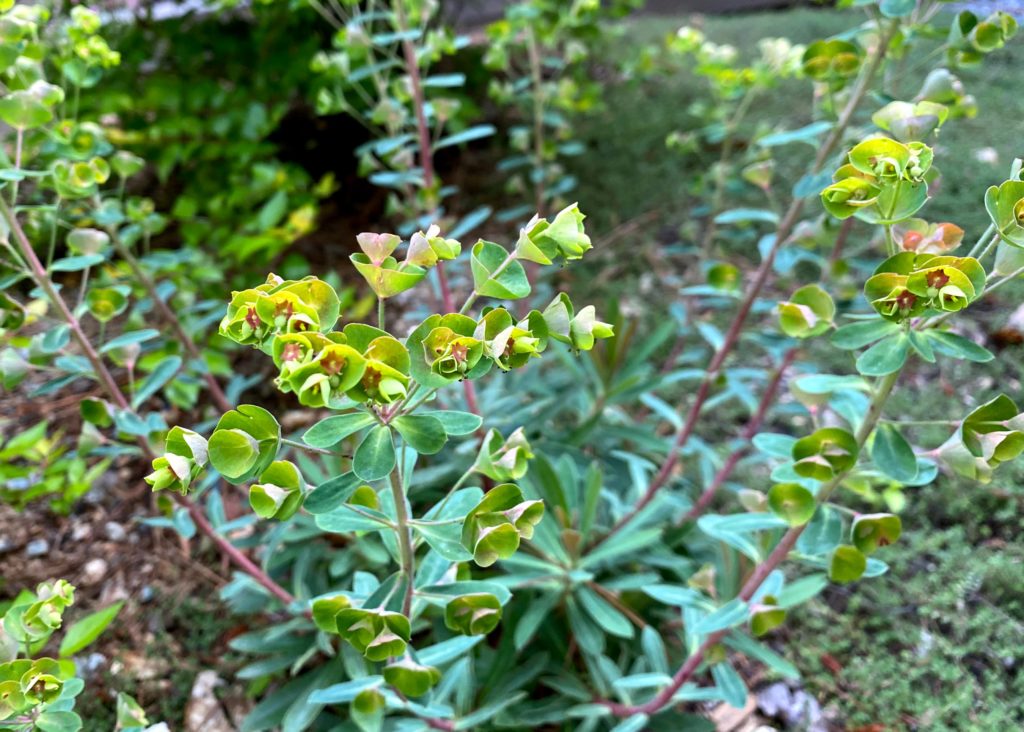
You’ll Know When It’s Love
Various types of euphorbias have been finding their way into my shopping cart lately, as they tick more than one box. Euphorbias are completely deer and rabbit proof, they are happy growing in well-drained soil, and have quirky flowers that I happen to adore. Most are sun lovers, but Euphorbia robbiae is shade tolerant, which makes it valuable as a filler between shrubs at the woodland edge. It spreads, which makes me positively giddy, because baby euphorbia plants are welcome anywhere in my garden. In sunnier areas I’ve used ‘Galaxy Glow’ along a path lined with the abelia ‘Canyon Creek’. It took a few years for me to realize how perfect this plant group would be in my garden space, so don’t rush your decisions. Even plant love is worth waiting for.
Put on Your Designer Hat
While I do draw out designs for certain areas just as I would do for a customer, what I find most helpful is to see shrubs or trees in place and then come up with ideas for companion plants. I love to take a small area surrounded by woody plant material and create companion plantings to finish the look. In some garden situations I might use bulbs, perennials, and annuals, but with deer and rabbits living in the area, I tend to skip the annuals and go for more critter-resistant bulbs, perennials, and groundcovers. As I add plants I try to repeat foliage and bloom colors through the garden to connect the spaces visually. If I do change my mind, or I find something better, out come the spade and wheelbarrow, because one of the joys of gardening is the ability to change things around.
I hope you’ll be inspired this winter to find a few new ways to add interest to your existing garden space. For more ideas, message me and let me know what you’re thinking. I’ll be happy to help.
